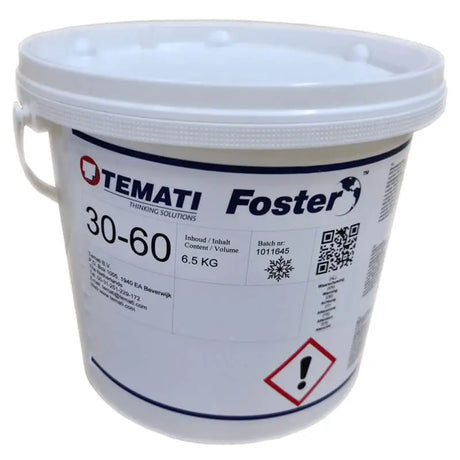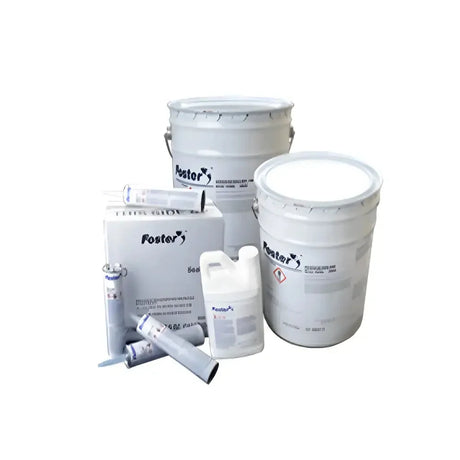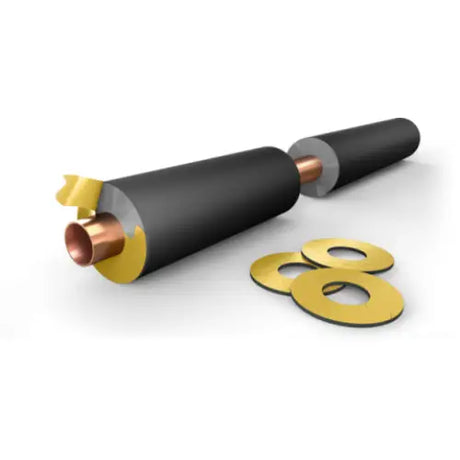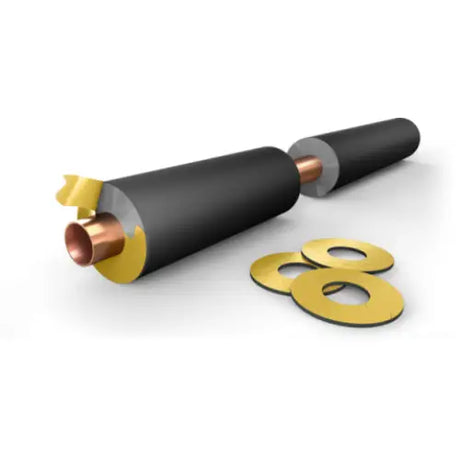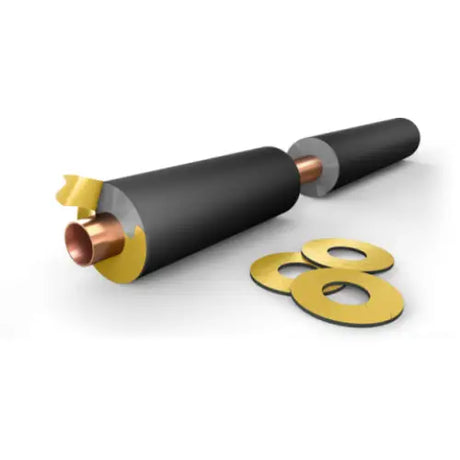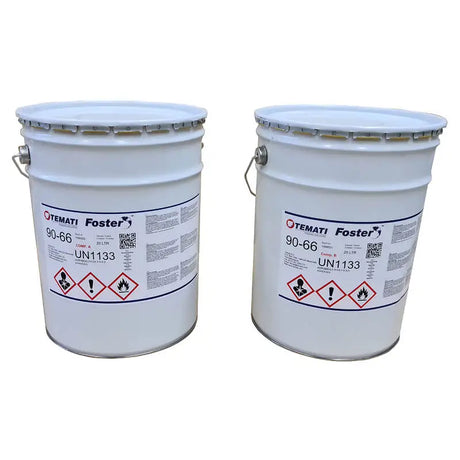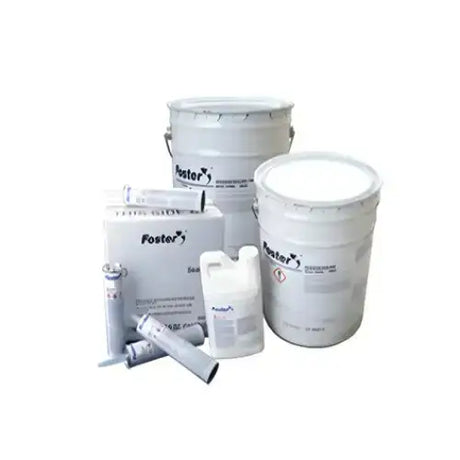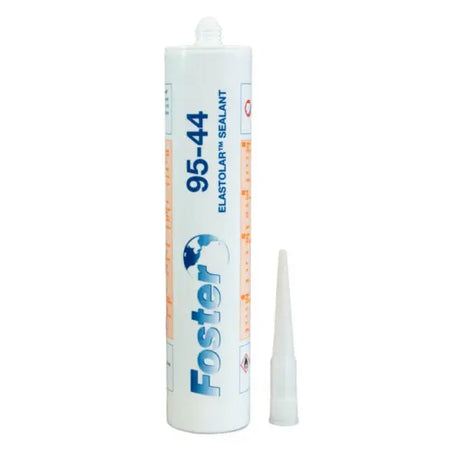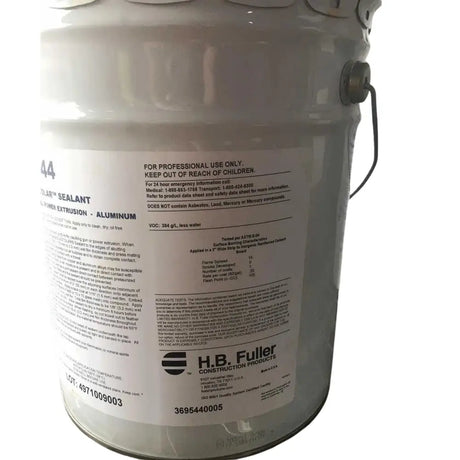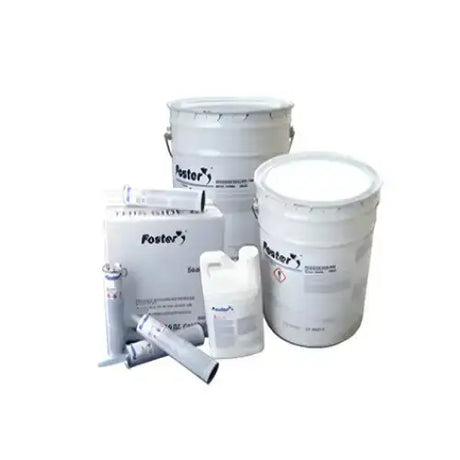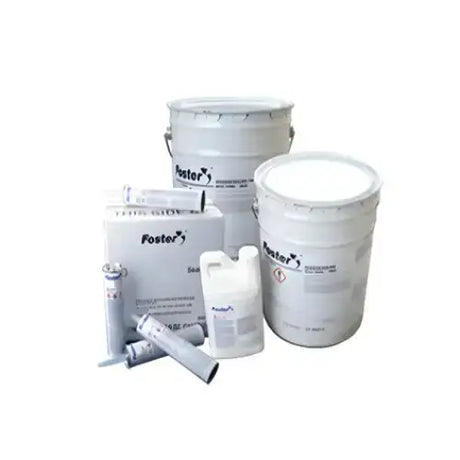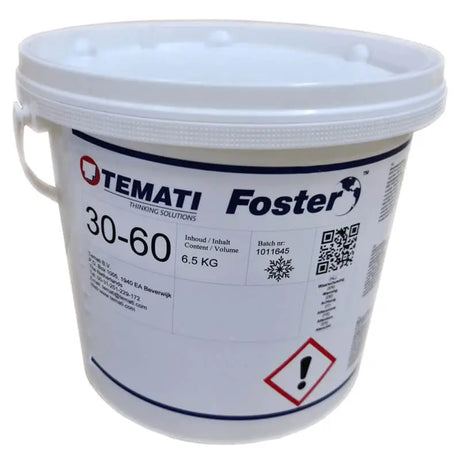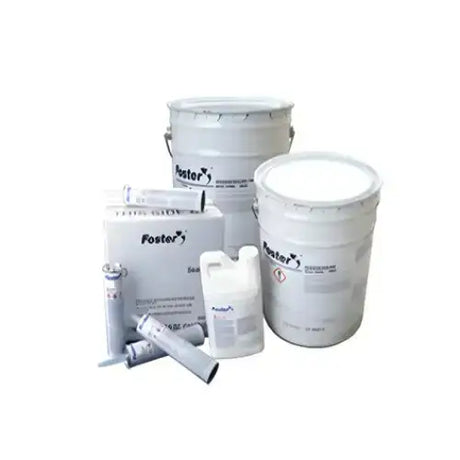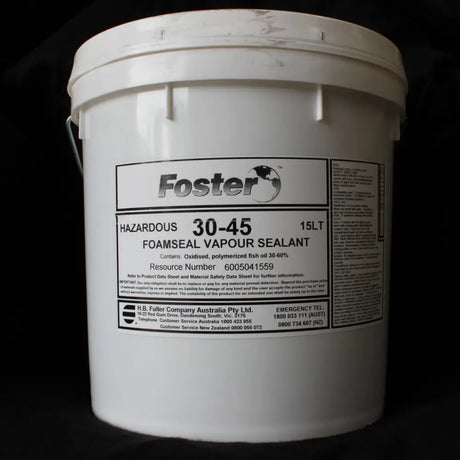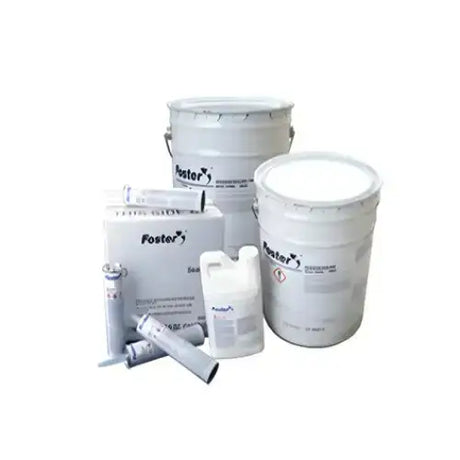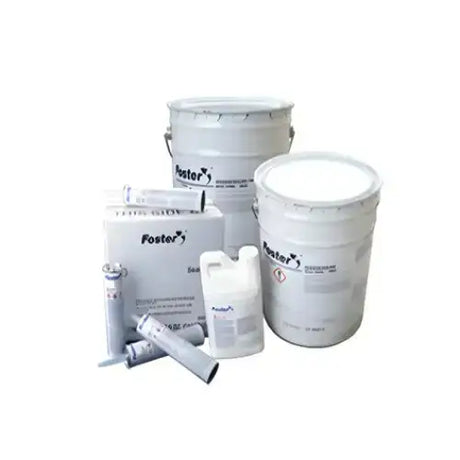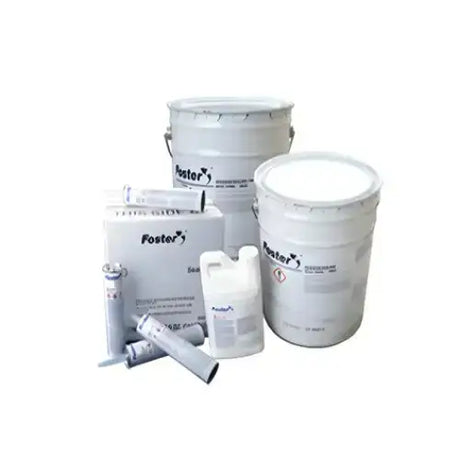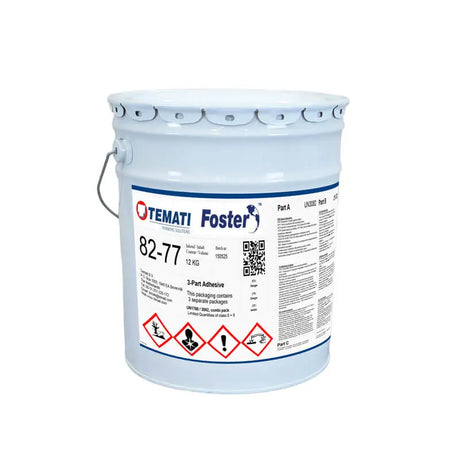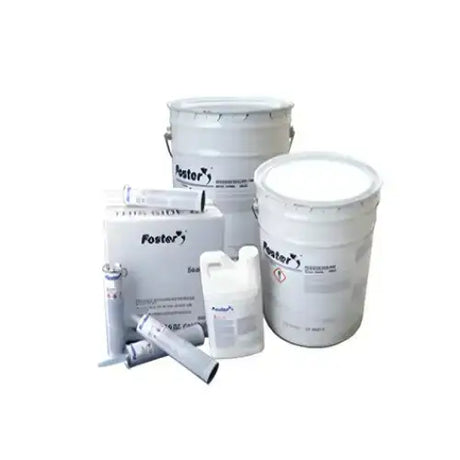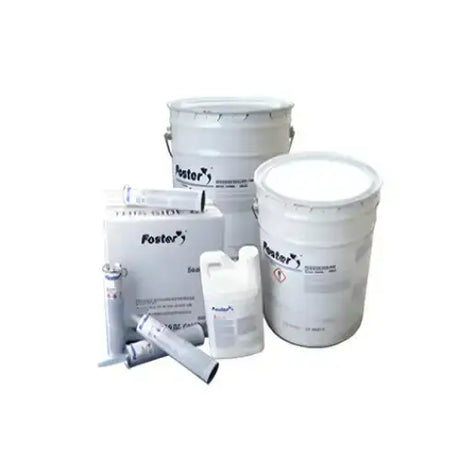Kaimann
Kaifix ECplus Butt Joint 25mm Black self-adhesive
From £3216Unit price /UnavailableIn stockKaimann
Kaifix ECplus Butt Joint 19mm Black self-adhesive
From £3393Unit price /UnavailableIn stockKaimann
Kaifix ECplus Butt Joint 13mm Black self-adhesive
From £3636Unit price /UnavailableIn stockKaimann
Kaifix ECplus Butt Joint 9mm Black self-adhesive
From £3879Unit price /UnavailableIn stock
Understanding Mastics in Insulation
Mastics are a type of viscous material that play a pivotal role in the field of insulation. Often lauded for their adhesive and sealing properties, these compounds are crucial for ensuring the integrity and efficiency of insulation systems.
Definition and General Overview
Essentially, mastics are a thick, paste-like substance used for bonding and sealing in various construction and industrial applications. When it comes to insulation, mastics are employed to join insulation panels, seal joints and seams, and provide a moisture-resistant barrier. Their unique properties allow them to form a durable bond on a range of surfaces, including irregular or porous materials where traditional adhesives may fail.
| Property | Description |
|---|---|
| Adhesion | High initial tack, adhering to a variety of substrates. |
| Flexibility | Remains pliable to accommodate movement and temperature shifts. |
| Durability | Resistant to aging, weathering, and environmental factors. |
| Application Range | Suitable for both indoor and outdoor settings. |
The Composition and Variance of Industrial Mastics vs. Commercial Mastics
Primary Components of Industrial Mastics
Industrial mastics are formulated to meet the rigorous demands of heavy-duty applications. They typically consist of a blend of synthetic rubbers, resins, oils, and other additives designed to enhance their performance in extreme conditions.
Differences from Commercial Variants
In contrast, commercial mastics, while still effective, are often designed for less demanding environments. The main difference lies in the resilience and longevity of the industrial-grade products, which are tailored to withstand harsh industrial settings.
| Component | Industrial Mastics | Commercial Mastics |
|---|---|---|
| Synthetic Rubbers | Higher grade for resilience and elasticity | Standard grade for general applications |
| Resins | Enhanced for extreme conditions | Optimized for cost-efficiency |
| Additives | Specialized for industrial performance | General-purpose additives |
Application Techniques and Key Strategies for Insulation Mastics
Mastics Application in Insulation
The application of mastics in insulation is a meticulous process that demands precision and expertise. Typically, mastics are applied using trowels, spatulas, or caulking guns, depending on the area and nature of the job.
Key Techniques Used
The key to successful application involves surface preparation, correct mastic selection, and proper curing times. Ensuring a clean, dry, and dust-free surface is critical for optimal adhesion.
| Technique | Description |
|---|---|
| Surface Preparation | Essential for strong adhesion. |
| Mastic Selection | Tailored to the specific job requirements. |
| Curing Times | Allowing for full bond strength and durability. |
The Industrial Advantages of Using Mastics for Insulation
Main Purposes of Mastics in Industrial Settings
In industrial environments, mastics play a multi-faceted role. They seal against moisture ingress, bond insulation panels, and prevent air leaks, all of which are crucial for maintaining the integrity of insulation systems.
Benefits for Insulation
The benefits of using mastics are extensive, leading to improved thermal performance, reduced energy costs, and an overall increase in system longevity.
| Purpose | Benefit |
|---|---|
| Sealing | Prevents moisture and air ingress. |
| Bonding | Maintains structural integrity of insulation. |
| Energy Efficiency | Reduces heating and cooling costs. |
The Resilience of Mastics in Extreme Conditions
Mastics in Extreme Temperatures or Harsh Conditions
One of the most impressive characteristics of mastics is their ability to perform in extreme temperatures and harsh environmental conditions. High-quality industrial mastics can withstand significant temperature fluctuations without losing their adhesive properties or becoming brittle.
Performance in Adverse Conditions
Whether in the freezing cold or blistering heat, mastics maintain their sealing capabilities, making them an indispensable component in many industrial insulation applications.
| Temperature Range | Performance |
|---|---|
| Low Temperatures | Remains flexible. |
| High Temperatures | Resists softening. |
Compatibility of Mastics with Different Insulation Materials
Interaction with Insulation Materials
Mastics must be compatible with the insulation materials they are applied to. This includes traditional fibreglass, stone wool, and newer materials like PIR polyisocyanurate boards.
Diverse Material Interaction
The diversity in mastic formulations allows for adhesion to a broad spectrum of materials, ensuring reliable seals and joints across different insulation systems.
| Insulation Material | Mastic Compatibility |
|---|---|
| Fibreglass | Commonly compatible |
| Stone Wool | Often used with mastics |
| Polyisocyanurate Panels | Specific mastics required |
Safety Precautions for Mastics in Large-Scale Industrial Insulation
Safety Considerations in Industrial Projects
When using mastics on large-scale industrial projects, safety is a paramount concern. The application process often requires proper ventilation, protective equipment, and adherence to safety data sheets to minimize risk.
Large-Scale Project Precautions
Industrial settings may also necessitate additional precautions due to the scale and complexity of the projects involved.
| Safety Aspect | Consideration |
|---|---|
| Ventilation | Essential to disburse fumes. |
| Protective Equipment | Includes gloves, masks, and eyewear. |
| Safety Data Sheets (SDS) | Must be followed for proper handling and use. |
The Longevity of Mastics and Factors Influencing Their Durability
Typical Lifespan of Mastics
Mastics are renowned for their longevity, with many products offering a lifespan that can match or exceed that of the insulation materials they're paired with.
Influencing Factors
Various factors can affect the durability of mastics, including environmental exposure, quality of application, and the physical stresses the insulation system encounters.
| Factor | Influence on Durability |
|---|---|
| Environmental Exposure | UV, moisture, and temperature impact lifespan. |
| Application Quality | Directly correlates with performance. |
| Physical Stresses | Expansion and contraction can test longevity. |
Sustainable Options in Mastics for Insulation
Environmentally Friendly Mastics
As the industry moves towards sustainability, there is a growing demand for environmentally friendly mastic options. These products are formulated to reduce harmful emissions and are made from renewable or recycled materials where possible.
Sustainable Mastic Alternatives
Manufacturers are increasingly offering products that not only meet performance standards but also align with environmental goals, providing a win-win for industry and the planet.
| Sustainable Feature | Benefit |
|---|---|
| Low VOC Content | Minimizes emissions. |
| Renewable Materials | Reduces environmental impact. |
Cost Analysis of Mastics in Comparison with Other Insulation Adhesives
Mastics vs. Other Insulation Adhesives
When considering the cost of mastics, it's important to compare them with alternative insulation adhesives and coatings. Mastics often provide a more effective long-term solution due to their durability and versatility.
Financial Comparison
Although the initial outlay for mastics may be higher, their extended lifespan and performance can lead to cost savings over time, especially in demanding industrial environments.
| Insulation Adhesive | Initial Cost | Long-Term Value |
|---|---|---|
| Mastics | Higher | Potential savings through longevity |
| Other Adhesives | Varies | May require more frequent replacement |
Innovations in Mastics for Insulation: Looking Towards the Future
Recent Advancements in Mastics
The field of mastics has seen considerable innovation in recent years, with advancements in chemistry leading to improved performance, application ease, and environmental impact.
Technological Developments
Emerging technologies have led to mastics that cure faster, adhere stronger, and perform better under a wider range of conditions, thereby enhancing the overall effectiveness of insulation systems.
| Innovation | Impact |
|---|---|
| Advanced Resins | Improved adhesion and environmental resistance. |
| Faster Curing Times | Increases project efficiency. |
Mastics are an indispensable aspect of modern insulation practices, offering unmatched sealing and bonding capabilities in industrial settings. With ongoing advancements and a move towards sustainability, mastics will continue to play a critical role in building and maintaining efficient, durable, and safe insulation systems.
Sealants in Insulation: Functions and Benefits Explained
Sealants are vital components in both commercial and industrial insulation, providing the necessary barrier to prevent air, water, and other environmental elements from penetrating building envelopes. Their versatility and effectiveness make them indispensable in a wide variety of applications.
Defining Sealants in the Insulation Context
A sealant is a pliable material used to block the passage of fluids through the surface or joints or openings in materials. In the context of insulation, sealants help maintain the integrity of the thermal barrier, preventing energy loss and protecting against moisture and air infiltration.
| Feature | Benefit |
|---|---|
| Flexibility | Accommodates building movement. |
| Durability | Long-lasting performance. |
| Adhesion | Strong bond to diverse materials. |
| Water-Resistance | Protects against moisture damage. |
Comparing Sealant Types for Insulation Across Industries
Diverse Sealants for Commercial and Industrial Use
The market offers a variety of sealants tailored to different industries and applications. Each type of sealant has distinct properties that make it suitable for specific conditions and materials.
How Commercial and Industrial Sealants Vary
For instance, industrial sealants are often more robust to withstand harsher environments, while commercial sealants may be optimized for ease of use and cost-effectiveness.
| Sealant Type | Commercial Use | Industrial Use |
|---|---|---|
| Silicone | General-purpose, flexible. | High-temperature resistance, durable. |
| Polyurethane | Strong adhesion, paintable. | Resistant to chemicals and abrasion. |
| Acrylic | Cost-effective, easy to apply. | Modified versions for industrial strength. |
The Role of Environmental Conditions in Selecting Insulation Sealants
Impact of Environmental Factors on Sealant Selection
Choosing the right sealant for insulation purposes is critical, and environmental conditions play a significant role in this decision-making process. Factors such as temperature, humidity, UV exposure, and potential for chemical contact must all be considered.
Tailoring Sealant Choice to Specific Environments
Selecting a sealant that can perform under the expected conditions ensures the longevity and effectiveness of the insulation system.
| Environmental Factor | Consideration in Sealant Selection |
|---|---|
| Temperature | Must withstand local temperature ranges. |
| Humidity | Should resist moisture absorption. |
| UV Exposure | Requires UV-stable formulations. |
| Chemical Contact | Needs chemical-resistant properties. |
Best Practices for Applying Sealants in Large-Scale Insulation Projects
Sealant Application Techniques
The application of sealants in large-scale insulation projects requires a systematic approach to ensure airtight and watertight seals. Techniques can vary from the use of caulking guns for precision work to spraying when covering larger areas.
Ensuring Effective Sealant Application
Key practices include proper surface preparation, correct tool usage, and allowing sufficient time for curing, all of which contribute to the sealant's performance and durability.
| Best Practice | Description |
|---|---|
| Surface Preparation | Cleaning and priming for optimal adhesion. |
| Tool Usage | Using appropriate tools for even application. |
| Curing Time | Allowing full set for maximum effectiveness. |
Enhancing Energy Efficiency with Insulation Sealants
Contribution of Sealants to Insulated Systems
Sealants play a critical role in enhancing the energy efficiency of buildings. By creating an airtight seal, they minimize the infiltration of outside air and the escape of conditioned air, leading to significant energy savings.
Energy Efficiency Advantages
The use of high-quality sealants in insulation systems can contribute to lower heating and cooling costs, as well as a reduced carbon footprint.
| Energy Efficiency Aspect | Impact of Sealants |
|---|---|
| Air Infiltration | Reduced air leakage improves energy savings. |
| Thermal Bridging | Minimized heat transfer through structural elements. |
| HVAC Efficiency | Less strain on systems due to stabilized indoor temperatures. |
The Versatility of Sealants in Insulation System Repairs
Sealants as a Repair Solution
Sealants are not only used in new insulation installations but also serve as an excellent solution for repairing existing systems. They can be applied to fill gaps, cracks, and other imperfections that may have developed over time.
How Sealants Facilitate Repairs
The correct type of sealant, matched to the material and environmental conditions, can restore the integrity of an insulation system without the need for complete replacement.
| Repair Scenario | Sealant Application |
|---|---|
| Cracks and Gaps | Fill and seal to prevent energy loss. |
| Weathering Damage | Restore barrier against environmental elements. |
Health and Safety Best Practices When Using Sealants in Confined Spaces
Safety First with Insulation Sealants
Applying sealants in confined spaces presents unique health and safety challenges. Proper ventilation, personal protective equipment (PPE), and adherence to material safety data sheets (MSDS) are critical when working in these conditions.
Worker Safety in Tight Environments
It is imperative to establish safe working practices to protect installers from potential hazards associated with sealant fumes and handling.
| Safety Measure | Importance |
|---|---|
| Ventilation | Essential to reduce inhalation risks. |
| PPE | Protects against direct contact with harmful substances. |
| MSDS Compliance | Ensures awareness of potential health risks and first aid measures. |
Matching the Right Sealant to Different Insulation Materials
Determining the Appropriate Sealant
To achieve the best results, it's necessary to match the right sealant with the specific insulation materials being used. Compatibility is key to both performance and longevity.
Compatibility Considerations
Each insulation material, whether it's duct insulation, plasterboard, or PIR polyisocyanurate boards, has unique properties that must be taken into account when selecting a sealant.
| Insulation Material | Sealant Compatibility |
|---|---|
| Duct Insulation | Requires flexible, heat-resistant sealants. |
| Plasterboard | Often paired with paintable acrylic sealants. |
| Polyisocyanurate | Needs sealants that can bond to rigid foams. |
Long-Term Maintenance for Sealant-Enhanced Insulation Systems
Maintaining Sealant Integrity Over Time
The long-term performance of sealants is crucial for maintaining the energy efficiency and integrity of insulation systems. Regular inspections and maintenance are required to ensure the sealants are performing as intended.
Maintenance Requirements for Sealants
Understanding the maintenance needs of different sealant types can help extend the life of the insulation system and prevent costly repairs.
| Maintenance Task | Reason |
|---|---|
| Regular Inspections | Identifies potential degradation early. |
| Timely Repairs | Prevents small issues from becoming major problems. |
| Reapplication | Ensures continuous performance and protection. |
Navigating Regulatory Compliance When Using Sealants in Insulation
Regulatory Considerations for Sealants
The use of sealants in insulation is subject to various regulatory and compliance issues, which can vary depending on location and application. It's essential to be aware of and adhere to these regulations to ensure safe and legal use.
Compliance Issues Related to Sealants
Failure to comply with regulations can result in fines, project delays, and potentially compromised safety, making compliance a top priority for insulation projects.
| Compliance Aspect | Importance |
|---|---|
| Building Codes | Must meet local and national standards. |
| Environmental Regulations | Ensures minimal impact on the environment. |
| Health & Safety Laws | Protects workers and building occupants. |
The Influence of Technological Innovation on Sealant Products for Insulation
Advancements in Sealant Technology
The development of new sealant products has been propelled by technological innovation, leading to improved formulas, application methods, and environmental impact.
Impact of Technology on Sealant Evolution
With advances in chemistry and materials science, modern sealants offer superior performance, easier application, and greater sustainability.
| Technological Innovation | Impact on Sealants |
|---|---|
| Enhanced Formulations | Increased durability and flexibility. |
| Eco-Friendly Components | Reduced environmental footprint of products. |
| Precision Application | Improved ease and efficiency of application. |
Sealants serve as an essential tool in the arsenal of insulation solutions, offering adaptability, durability, and critical protection against the elements. As technology continues to evolve, we can expect even more advanced sealant options that push the boundaries of performance and sustainability, ensuring that insulation systems remain robust, energy-efficient, and compliant with the ever-growing expectations of both industry professionals and consumers.
The Role of Coatings in Enhancing Insulation Systems
Coatings are a crucial element in the field of insulation, offering an additional layer of protection and performance to a variety of insulation materials. These specially formulated products are designed to enhance the longevity and efficiency of insulation systems.
Defining Coatings in Insulation Applications
Insulation coatings are applied to the surface of insulation materials to protect them from environmental factors, mechanical damage, and to improve fire resistance. They range from thin paints to thicker, more substantial layers, each with its own set of properties and application methods.
| Feature | Benefit |
|---|---|
| Mechanical Protection | Shields insulation from physical damage. |
| Moisture Resistance | Prevents water ingress and related issues. |
| Fire Resistance | Enhances safety by reducing flammability. |
| Chemical Resistance | Guards against corrosive substances. |
Identifying the Best Coating Types for Industrial Insulation Needs
Varieties of Coatings for Insulation
The market offers a vast array of coatings designed to address specific industrial insulation needs. The choice of coating will depend on the operating environment, the type of insulation material, and the performance requirements of the system.
Customized Coatings for Different Industrial Scenarios
Whether the need is for resistance to extreme temperatures, chemical exposure, or outdoor weathering, there is a coating formulated to meet these demands.
| Coating Type | Ideal Use |
|---|---|
| Epoxy | For chemical and abrasion resistance. |
| Silicone | Suitable for high temperatures and flexibility. |
| Acrylic | General protection with UV resistance. |
| Polyurethane | Provides durable, weather-resistant coverage. |
Coatings as a Performance Enhancer for Insulation Materials
How Coatings Improve Insulation Performance
Coatings are not just protective layers; they contribute significantly to the performance and longevity of insulation materials. By forming a barrier against environmental stressors, they help maintain the insulation's thermal efficiency.
Longevity and Effectiveness Boosted by Coatings
A well-chosen and correctly applied coating can prevent common issues like moisture ingress, UV degradation, and mechanical wear, all of which can compromise insulation performance.
| Performance Factor | Role of Coatings |
|---|---|
| Thermal Efficiency | Maintains consistent R-values. |
| Longevity | Extends the service life of insulation. |
| Structural Integrity | Prevents degradation of insulation materials. |
Specialized Coatings for High-Temperature and Corrosive Environments
Coatings for Extreme Conditions
Some industrial applications expose insulation to high temperatures and corrosive substances. Specialized coatings are engineered to withstand these conditions, preserving the function and form of insulation even under severe stress.
Recommended Coatings for Harsh Settings
Products such as high-temperature silicone or ceramic coatings are examples of solutions designed for these extreme environments.
| Environment | Coating Recommendation |
|---|---|
| High Temperature | Silicone or ceramic-based coatings. |
| Corrosive | Epoxy or vinyl ester coatings. |
Enhancing Insulation Fire Resistance with Appropriate Coatings
Fire-Resistant Qualities of Coatings
In the event of a fire, the right coating can make a significant difference in preventing the spread of flames and reducing smoke production. Fire-resistant coatings are formulated to char or expand when exposed to high heat, creating a protective barrier.
Safety Benefits of Fire-Resistant Coatings
These coatings not only protect the insulation material but can also contribute to the overall fire safety strategy of a building or facility.
| Fire Safety Aspect | Benefit of Fire-Resistant Coatings |
|---|---|
| Flame Spread | Limits the propagation of flames. |
| Smoke Production | Reduces the amount of smoke generated. |
| Integrity | Maintains structural stability longer. |
Effective Application Methods Tailored to Insulation Coatings
Insulation Coating Application Techniques
The application of coatings to insulation requires precision and understanding of the coating's properties. Methods range from brush and roller applications for smaller jobs to spray systems for larger surfaces or complex geometries.
Optimizing Coating Application for Best Results
Choosing the right application method is crucial for achieving an even and effective coating layer that will perform as expected.
| Application Method | Description |
|---|---|
| Brush and Roller | Ideal for small areas and touch-ups. |
| Spraying | Efficient for large or uneven surfaces. |
| Troweling | Provides a thick, even layer over irregular shapes. |
The Impact of Environmental and Health Regulations on Insulation Coatings
Regulatory Landscape for Coating Usage
The use of coatings in insulation is subject to environmental and health regulations aimed at limiting the impact on both human health and the environment. These regulations dictate the permissible levels of volatile organic compounds (VOCs), proper disposal methods, and safety protocols.
Navigating Compliance in Coating Practices
Staying abreast of these regulations ensures that coating practices are not only effective but also compliant with current standards.
| Regulation Area | Importance of Compliance |
|---|---|
| VOC Emissions | Reduces impact on air quality. |
| Disposal | Ensures environmentally safe disposal. |
| Worker Safety | Protects installers and occupants. |
Retrofitting Insulation Systems with Coatings for Improved Performance
Applying Coatings to Existing Insulation
Coatings can be applied to already-installed insulation systems to address issues or enhance performance. This retrofitting process can extend the life of the insulation and avoid the need for complete replacement.
How Coatings Benefit Existing Systems
This process can improve fire resistance, increase moisture protection, and refresh the protective layer against mechanical and environmental damage.
| Retrofit Benefit | Description |
|---|---|
| Extended Lifespan | Coatings can revitalize aged insulation. |
| Upgraded Performance | Enhances the overall efficacy of the insulation system. |
| Cost Savings | Less expensive than replacing entire systems. |
Examining the Long-Term Financial Implications of Insulation Coatings
Cost-Benefit Analysis of Insulation Coatings
The financial investment in coatings must be weighed against the long-term benefits they provide. While the initial cost may be substantial, the extended lifespan and reduced maintenance needs can result in significant savings.
Evaluating Coating Investment Over Time
A comprehensive cost-benefit analysis will consider factors such as material costs, labor, maintenance savings, and energy efficiency improvements.
| Financial Aspect | Consideration in Cost-Benefit Analysis |
|---|---|
| Initial Investment | Material and application costs. |
| Maintenance Savings | Reduced need for repairs and touch-ups. |
| Energy Efficiency | Long-term savings on energy expenses. |
Compatibility and Adhesion: Matching Coatings with Insulation Materials
Ensuring Coating and Material Compatibility
The interaction between coatings and insulation materials is a critical consideration. Coatings must adhere well and remain compatible over time, without causing degradation to the insulation material.
Adhesion and Material Considerations
Compatibility testing and manufacturer recommendations can guide the selection of coatings to ensure successful adhesion and long-term performance.
| Insulation Material | Coating Compatibility |
|---|---|
| Fiberglass | Requires coatings that won't impede fiber flexibility. |
| Mineral Wool | Needs moisture-resistant coatings. |
| Plastic Foams | Compatible with specific chemical formulations. |
The Future of Insulation Coatings: Technological Advancements and Innovations
Technological Progress in Insulation Coatings
The field of insulation coatings is continually evolving, with new technologies leading to advanced formulations. These innovations offer improved performance, easier application, and reduced environmental impact.
Embracing Innovations in Coating Technologies
From nanotechnology to eco-friendly ingredients, the latest advancements are setting new standards for insulation coatings.
| Technological Innovation | Impact on Coatings |
|---|---|
| Nanotechnology | Enhanced barrier properties at a microscopic level. |
| Green Formulations | Reduced harm to the environment and human health. |
| Smart Coatings | Coatings that react and adapt to environmental changes. |
Coatings are an integral component in the arsenal of insulation technologies, offering not only protection but also improving the overall performance of insulation systems. As we face increasing environmental and safety regulations, along with a heightened focus on sustainability, coatings will continue to evolve. The future of insulation depends on our ability to innovate, creating products that meet these demands while delivering cost-effective, long-lasting solutions for thermal management and protection.

